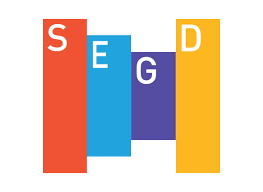ARCHIVE: Author Archive:
Funny Signs Had Us Do a Double-Take
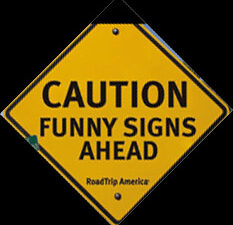
Every now and then, you’ll see a sign that makes you go, “Hmmm.” Sometimes that reaction is caused by a funny message — or a typo. We collect and save sign images that make us chuckle. Here are some of our favorites. Winners of the “Stating the Obvious” Award When the Copy Editor Left Early for Vacation So Many Questions… Oops!
A Peek Ahead to 2022
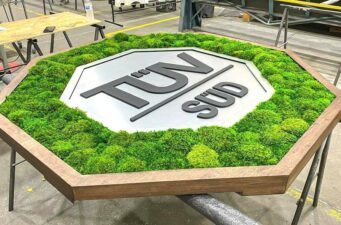
While we don’t have a handy Magic 8 ball able to reliably predict the future, it hasn’t stopped us from making some educated guesses about next year’s signage industry trends. They include: Minimalism in design. We’ll continue to see signs focused on clean, crisp images that evoke elegance. Improved sustainability. As more companies embrace ESG (environmental, social, and governance) policies, they’re incorporating eco-friendly initiatives into their buildings, including signage construction, materials, and power. One of Metro’s recent clients, TÜV SÜD—a Germany-based company offering safety, security, and sustainability solutions—opted to use an innovative wall sign for its U.S. headquarters, for example. Metro’s partner, CityScapes, recommended the preserved moss material featured in the sign. Initially, the clients asked to use real wood
Signage: Enhancing Environments in a Post-COVID World
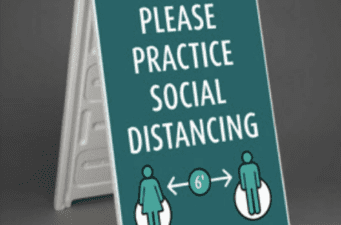
With vaccines readily available and the post-COVID landscape evolving, businesses will continue examining and creating policies to ensure the safety of their employees returning to in-person work — and the safety of customers and visitors, too. In many cases, companies have also recognized the value of offering their employees a hybrid approach: working part-time virtually and part-time in person. This strategy makes sense for companies who’ve incorporated virtual meetings as a complement to in-person meetings with clients and visitors. More than a year of remote work is challenging the way we view traditional work models. A Microsoft 2021 report found 73% respondents desiring flexible, hybrid work options after the pandemic ended, and 66% of businesses indicating a plan to redesign physical
Inside Metro Sign
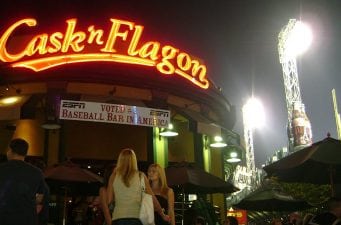
One of the easiest ways to get recognition is to put up a sign. We’ve all seen those iconic signs that garner instant attention: The Citgo Sign in Kenmore Square, Cask ‘n Flagon next to Fenway, McDonalds’ golden arches. Target’s bullseye. A quick glance at these signs tells us immediately what store we’ve found. But these globally recognized icons—like any sign, really—needed serious planning and strategy to work effectively. Most people—even smart businesses who hire a company like Metro—don’t realize all the steps involved with designing, building, and installing signage. Adding signs requires more than simply hanging a sign on an interior wall or erecting a sign on a pole outside. Developing a signage strategy, from conceptualization through installation, often
A Guide to Freestanding Signs for Your Business
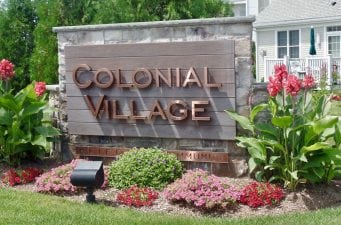 Freestanding signs are a great way to inform your customers and promote your business. But with all the different types of signs available, it can be hard to find the right sign for your needs. We are here to help. Read on to learn more about the different types as well as all the benefits freestanding signs have to offer. Visit Our Portfolio to see examples of the various types of freestanding signs. Pylon Signs Pylon signs are freestanding outdoor signs mounted on a single or double pole. Due to their height that can be seen from greater distances than other freestanding signs. Depending on their placement, single or double-sided signs are available, along with extra features such as illumination.
Freestanding signs are a great way to inform your customers and promote your business. But with all the different types of signs available, it can be hard to find the right sign for your needs. We are here to help. Read on to learn more about the different types as well as all the benefits freestanding signs have to offer. Visit Our Portfolio to see examples of the various types of freestanding signs. Pylon Signs Pylon signs are freestanding outdoor signs mounted on a single or double pole. Due to their height that can be seen from greater distances than other freestanding signs. Depending on their placement, single or double-sided signs are available, along with extra features such as illumination.
Optimizing Higher Education Signage with Metro Sign & Awning
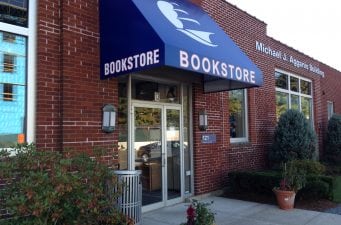
No one likes to get lost! And one of the best ways an institution can help people find their way or get important information quickly and clearly is to employ signage. In fact, signage offers a good tool for higher education settings. Freestanding signs with electronic message center displays (EMC) distribute daily and emergency information efficiently, and wayfinding signs help people navigate campus more easily. Interior signs can reinforce learning by supporting multimedia for lectures or enhance the interdepartmental recognition of student accomplishments by enabling departments to promote their students’ successes. And consistent signage supports both an institution’s branding and elevates its school spirit. Metro Sign has worked with a variety of colleges and universities right here in the heart
Keeping Pedestrians Safe at Fitchburg State – Higher Education Series Post 1

One of the colleges with whom Metro Sign has worked is Fitchburg State — a client for over three years. Some of the college’s first projects included adding need-based interior photopolymer Americans with Disabilities Act (ADA) signs. This initial opportunity led to additional signage projects including wayfinding, monument signs, directories, building identification, and award displays. One important job included the addition of flashing pedestrian signs at crosswalks. College administrators worried that vehicles failed to slow down when students and faculty entered the crosswalks, which could cause a hazardous situation. To keep both vehicle and foot traffic safe, Metro Sign installed environmentally-friendly new pedestrian signs with flashers activated by the press of a button. These solar-powered lights flash visibly to vehicles
Controlling Costs on a Complex UMass Boston Signage Project – Higher Education Series Post 2
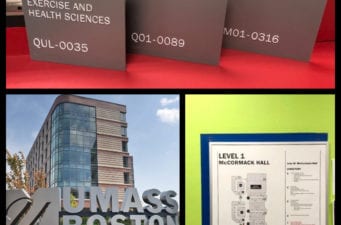
While Fitchburg State needed updated signs that complied with the Americans with Disabilities Act (ADA) regulations and a visually appealing way to celebrate its 125th anniversary, the University of Massachusetts Boston needed interior signage and more as part of its Renovations to Existing Academic Buildings (REAB) project. This monumental project included construction in McCormack and Wheatley Halls, Healey Library, and Quinn. Much of the renovation involved adapting vacant spaces to accommodate programs from the Science Center. Metro Sign’s contribution to the project included providing wayfinding, directories, and ADA compliant signs. UMass Boston initially provided specifications for a higher-end fabrication. When it was determined that the initial sign design would exceed the funds allotted Metro stepped in to help. Understanding the
No Signage Project Too Big at Suffolk University – Higher Education Series Post 3

Suffolk University might also share UMass Boston’s philosophy: Go big, or go home. Although Suffolk wasn’t working on a Renovations to Existing Academic Buildings (REAB) project when they called Metro Sign, they did have an unusual project in mind. Among its requirements for new architectural signage, the university wanted to add a 21 panel, 20-foot high wall mural. This high-pressure laminate (HDP) exterior wall mural required considerable engineering expertise and clear communication and coordination to ensure the seal on the curtain wall and panels would fit into the Z-Clip system. Have you ever arrived at a new location and you’re not quite sure where to go? Or you look at the map — often a freestanding sign — and it
Building Relationships at Salem State University – Higher Education Series Post 4
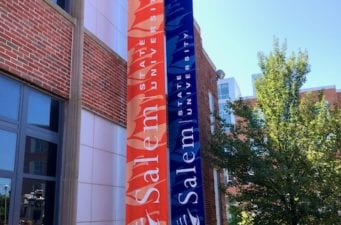
Some partnerships are made to last — and such is the case with the relationship between Metro and Salem State University, a client since 2003. Over the years, we’ve updated or added just about all the college’s campus and Americans with Disabilities Act (ADA) signage. From monument signs and flag banners to wayfinding signs, building identification, directory signs, and pretty much everything in between, we’ve made sure that everything we create fits Salem’s brand. Working in tandem with Salem’s marketing and facilities people on a series of projects over the past 17 years has allowed us to develop the partnership. It’s Metro Sign’s responsiveness and the quality of signs we make that make us the go-to choice for the university.
Categories
Recent Posts
Tags
Copyright 2022 MetroSign and Awning, All rights reserved | Privacy Statement | Terms of Use
